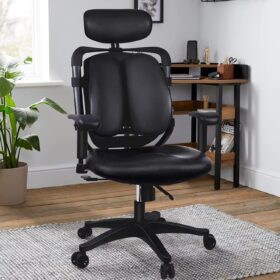To put it simply, Foam Rolling is a way to relieve these trigger points. It is a form of massage that you do yourself, that will ease away the pain. It isn’t that different from a classic or sports massage. Because it stimulates your circulatory system, more blood will reach your muscles, making it easier to use them with less pain. It will also relieve any joint pain orstress. Best of all, it will aid in your muscle’s recovery. Foam Rolling is a way to ease away your trigger points, and a way to boost your flexibility.
How Does Foam Rolling Help?
Don’t think that this muscle pain is a lifelong sentence, though! Both fascia and trigger points are capable of being released. You’ll even find that the related issuestend to go away afterwards! Myofascial therapy stretches and loosens the fascia, which results in more flexible body structures. This means less joint and muscle pain, a boost to your circulatory system, improved mobility, and greater flexibility. To put it simply, using a Foam Roller to ease away these problems will make it less painful to exercise, less likely you’ll be injured, and give you better exercise results. That’s why Foam Rolling is picking up in popularity. It can even help get rid of cellulite by breaking up the fat that causes that “cottage cheese” look.
So When Should A Foam Roller Be Used?
To reap the most benefits of your Foam Roller, you should use it before and after
your workout. Add it into your warm-up exercises, and your cool-downs, as well. For your warm-ups, you should start rolling before you actually get started. This includes stretching. You’ll find that it increases blood flow in the muscles, and reduces the tension that can cause injury. When doing it as a cool-down, it will
help reduce the amount of blood to your muscles, so that they can return to pre-workout levels. It will also get rid of any lingering lactic acid, which causes that unpleasant“burn”workouts give you. It will also send in oxygen and nutrients for a speedier recovery. If you find yourself unable to foam roll more than once, then you should aim to do
it before your exercise. You can do it right before a workout, as well: Just five minutes before will give you results!
But what if it’s leg day or arm day? There’s a plan for that, too! Just roll over the area you’ll be exercising, both before and after.
Some Key Points when Foam Rolling:
- It’s best to add this into a routine. Daily usage is best. This is great for maintaining
your muscle health, which will mean less chance of injury and less pain. - Hydration is key, so make sure you’ve had enough water! This will keep your
tissue hydrated, which will make them more flexible, thus more receptive to your
Foam Rolling. - Use twice: Once before you exercise, and once afterwards. This will aid in both
prepping your muscles for a workout and for helping them recover. It is better
than the standard stretches most people use. - Keep it slow. If you roll too quickly, it won’t be as effective. Instead, keep your
movements slow, and concentrate on the area. A good ratio is one inch per second. - You shouldn’t go in just one direction. Instead, alterate! Go from side-to-side, then
up-and-down, or whatever other directions you want. - Don’t bear down on the muscle. Instead, use a moderate pressure for a
comfortable, effective session. If you ever experience pain instead of discomfort, then you’ve discovered a muscle trigger point. - If you’ve found a trigger point, stop rolling. Focus on top of the point, and carefully
rock the area. This will cause the point to release, most likely within thirty seconds. If that doesn’t work, continue rolling on and around the area until it does.
The benefits of Foam Rolling will not take long to notice. In fact, you’ll see results after the first use! You’ll feel more relaxed, flexible, and healthy.
What Type Of Foam Roller Is Best For Me?
As with any other regimen, don’t begin Foam Rolling beyond your abilities. Use softer rollers, so that you don’t further injure yourself, or cause yourself pain. Starting with the smooth inner roller is great, because it is gentle and can work as an introduction to the Foam Rolling regimen. It will let you build up your tolerance to rolling. Are you already an old hat to Foam Rolling? Or has the inner roller stopped working for you? Then you should use the outer roller. It is firmer, and designed to really work your muscles. This will make your workouts more effective and will give you the massage therapy you need after a strenuous exercise.
Can I Use A Foam Roller To Treat An Injury?
Have you received a soft tissue injury? Or maybe you just have muscles damaged from overuse? Either way, Foam Rolling is a great way to ease both of these problems. It works best for mild or moderate injuries, or those which are caused by restricted movement.
A word of warning: If you have an injury that worries you, or that is causing more than moderate pain, you should speak to your physician.
When Can You Perform Foam Rolling Exercises?
Incorporating a Foam Roller to your life is simple. The recommended movements take about two minutes, and are done two to three times per week. Or, alternatively, you can add it into your individual exercise regime. Because it takes two minutes each for both sides of your body, as well as working out all sections of muscle, it will probably take a beginner approximately half an hour for each session.




